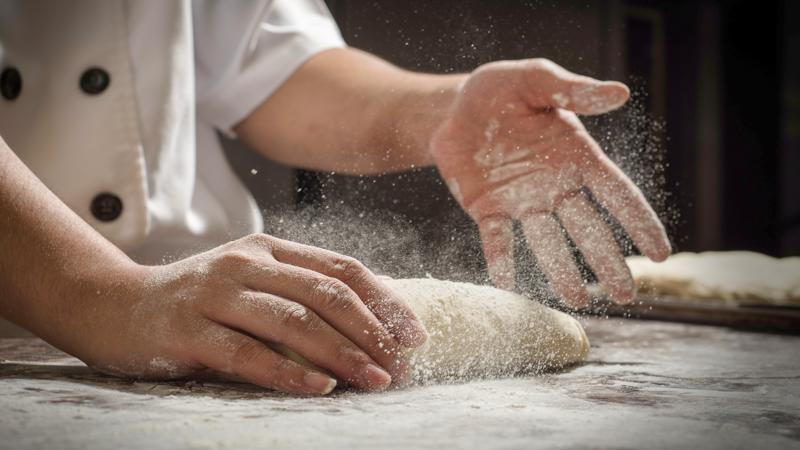High-altitude baking is a critical consideration for both home cooks and students at pastry arts schools in Boulder, among many other cities and towns that are significantly above sea level. While following the high-altitude instructions a box of cake mix is often enough, pastry arts students, pastry chefs and professional bakers need a strong understanding of how to adjust their recipes to create the best possible final product, whether they’re at or far above sea level.
 Baking at high altitudes requires some special considerations.
Baking at high altitudes requires some special considerations.Why do recipes need to adjust for high-altitude baking?
The basic, practical explanation of the need for high-altitude baking adjustments is that a number of factors converge to change the way recipes come together, bake and appear as a final product. San Francisco museum the Exploratorium pointed to decreasing air pressure at higher altitudes as the root cause.
Issues that crop up due to lower air pressure include reduced timelines for pastries and other baked goods to rise, as well as the faster evaporation of liquid. Additionally, as Betty Crocker pointed out, high altitudes let gases expand more quickly, requiring special attention to avoid doughs and batters rising too much.
Depending on the specific recipe, this can mean adjusting everything from baking soda and powder, which help baked goods and batters rise, to the sugar, fat, egg and even flour content. These changes will help you avoid common pitfalls that come with high-altitude baking, from cakes and brownies that seem to collapse in on themselves to the many variations of dry texture and mottled surfaces that can appear.
What adjustments can I make as I bake?
Word-of-mouth knowledge is a vital consideration for students and professionals alike who bake at high altitudes. King Arthur Flour pointed out that microclimates at higher altitudes – the seemingly minor differences between one home or restaurant and another not very far away – can cause recipes that work well in one location to yield substandard results at another.
If you’re working in a bakery, restaurant or similar business at elevations above 3,000 feet, make sure to talk with everyone else there who has baking and pastry arts experience. That way, you can learn as much as possible about which changes work in that specific setting.
There are also some general adjustments to keep in mind, which can help you more confidently bake new baked goods and pastries. Creating a functional baseline for basic changes makes it that much easier to alter individual recipes and track the results.
- Prevent baked goods sticking to their pans by using parchment paper, or thoroughly buttering or otherwise greasing the pan and then adding a light dusting of flour.
- For brownies and the many variations of dessert bars and squares, consider reducing the oven temperature by about 25 degrees.
- Increase the temperature by about 25 degrees for many other baked goods, and add 15 degrees for chocolate cakes and other delicate cakes.
- Add an additional egg or egg white to encourage cakes and similar baked goods to set more quickly.
- Slightly increase liquid content by one or two tablespoons to account for enhanced evaporation speed at higher altitudes.
- Cut roughly one tablespoon of sugar per cup in your recipes to improve the strength of the structure and avoid an overly sweet final product.
- As you prepare your first few batches of a baked good based on a new recipe, take notes about any deficiencies and compare to standard guidance about, and your own knowledge of, high-altitude adjustments.
Baking at high elevations requires some special attention and trial and error, but it’s a wholly conquerable problem. Boulder pastry arts students will gain vital hands-on instruction as they learn about baking while working and living at an especially high altitude.


